
NewsInformation Center
2022 IFTF Textile Machinery Seminar Held, Advocating to Promote Global Industry
2022/09/28
At 18:30 Beijing time on July 14, 2022 IFTF Textile Machinery Seminar was held in online + live mode. Sun Rui Zhe, President of the International Textile Federation and President of the China Textile Federation (hereinafter: CFTF), attended the meeting and delivered a speech. Xu Yingxin and Yang Zhaohua, Vice Presidents of CFTU, Yuan Hongping, Deputy Secretary General and Director of Foreign Affairs Office of CFTU, Yan Yan, Director of Social Responsibility Office of CFTU, Liu Yaozhong, Deputy Director of International Trade Office of CFTU and representatives of CFTU Foreign Affairs Office, China Textile Machinery Association and other departments and member units participated in the meeting online at the CFTU venue.
As a traditional industry meeting of the International Textile Federation, the International Textile Federation Textile Machinery Symposium is held annually by the Swiss, German and Italian Textile Machinery Associations in Zurich, Frankfurt and Milan on a rotating basis. In this meeting, members and former chairmen of the decision making committee of IFTF, representatives of IFTF management committee members, and representatives of multinational textile and spinning machine enterprises attended the meeting and had an in-depth exchange of information on the current situation and development ideas of the textile and spinning machine industry in each country (region). The meeting was chaired by Christian Schindler, Director General of IFTF.
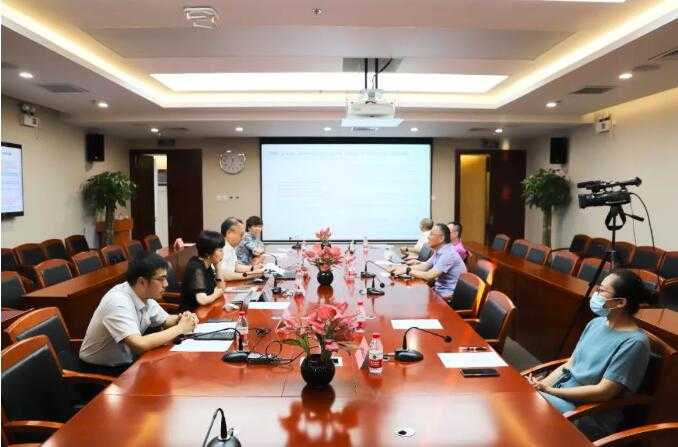
In the opening speech of the conference, Sun Rizhe communicated on the development status and innovative practices of the Chinese textile industry. He pointed out that at present, the world's century-old changes and the epidemic of the century are intertwined, and the development of the textile industry is facing more risks and challenges. As an important platform to promote global textile industry cooperation, the International Textile Federation insists on promoting the consensus of the textile industry, safeguarding the interests of the textile industry and playing an important role in promoting the stable, safe and healthy development of the global textile industry. The main manifestations are.
First, the International Textile Federation puts development at the center of the industry's agenda. International Textile Federation upholds the principle of common but differentiated responsibilities, according to the characteristics of the industry, the stage of development, and actively promote the industry's innovation and cooperation, steady recovery and sustainable development. Continuously improve the effectiveness, fairness, balance and coordination of the development of the global textile industry. Second, the International Textile Federation to promote innovation as the key task of industry development. It insists on being innovation-driven and strengthens the construction of platforms, think tanks and standards. Through cooperation with universities, scientific institutions, research institutes or industrial clusters, it plans to establish global R&D platforms around the world, such as IFTF global R&D centers, global innovation centers or global industrial demonstration bases. By conducting pilot projects, it will promote the transformation of cutting-edge technologies into advanced productivity in the industry. Third, IFTF takes strengthening cooperation as the key landing point for industry services. Open cooperation is an important way to enhance the operational efficiency and stability and security of the global industry chain supply chain. The International Textile Federation is committed to building a cooperative relationship of mutual respect, fairness and justice, win-win cooperation, safety and security. It upholds the multilateral trading system, promotes the elimination of trade, investment and technical barriers, promotes the free flow of resource elements in the global textile industry, and builds synergy for sustainable development. The International Textile Federation actively promotes pragmatic cooperation and balanced development of the industrial chain and supply chain.
Sun Ruizhe pointed out that China's textile industry is an important part of the global textile supply chain and plays an important role in meeting people's demand for a better life and ensuring the stable and healthy development of the world textile industry. Since this year, in the face of the complex and severe international situation and the real impact of the domestic epidemic, the Chinese textile industry under pressure to move forward.
Sun Rui Zhe introduced, 2022 January to May, the textile industry industrial value added of enterprises above the size of 1.5% year-on-year growth, a slowdown of 10 percentage points over the same period last year; textile industry enterprises above the size of the business income achieved year-on-year growth of 7.1%; to achieve a 19.5% year-on-year reduction in profits. National retail sales of clothing, shoes and hats, needles and textiles above the quota decreased by 8.1% year-on-year, and the national online retail sales of wearing goods decreased by 1.6% year-on-year.
Sun Rizhe pointed out that the Chinese textile and apparel industry has carried out fruitful and innovative practices while achieving a stable recovery. The industry has made great progress in innovation development, digital development, green development, intensive development, open development, etc.
Sun Rizhe stressed that at present, the world has entered a new period of turbulent change, and only by integrating into the tide of globalization, openness and cooperation can bring a broader space and a more prosperous future to the industry.
Sun Rizhe pointed out that, for the future, the industry should jointly promote inclusive and inclusive development; jointly promote digital and green transformation; and jointly enhance the sense of industrial security and access. China's development cannot be separated from the world, and the world's development needs China. In the second half of the year, China will hold the 20th National Congress of the Communist Party of China. Under the logic of common prosperity and the new development pattern of double cycle, "China's development, world opportunities" will be interpreted and interpreted in the field of textile and garment.
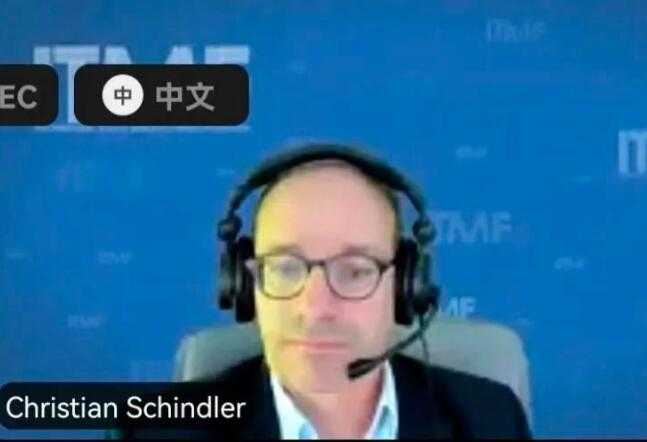
During the meeting, Anees Khawaja, CEO of Pakistan Mohammad Group, said that Pakistan has some problems in politics, economy and industry. There is a constant change of government and recent textile projects have been postponed for various reasons. Accordingly, there are some policy changes in the garment industry and the textile industry. Currently, 60-70% of the country's revenue comes from textile exports, with home textiles being the most popular sector. He hopes that Pakistan's textile industry can strengthen its competitiveness and related textile projects can go to restore the impact. He stressed that Pakistan is currently suffering from a severe economic recession. For the future, Pakistan's textile industry will focus on sustainable development, and he believes that Pakistan will turn the tide against the wind in the near future and is expected to see a 25% growth this year. In addition, he also expressed hope that the local balance sheet has improved, and increased investment opportunities.
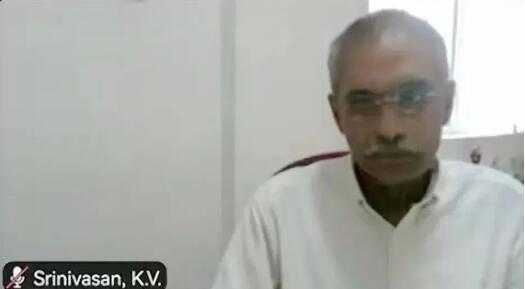
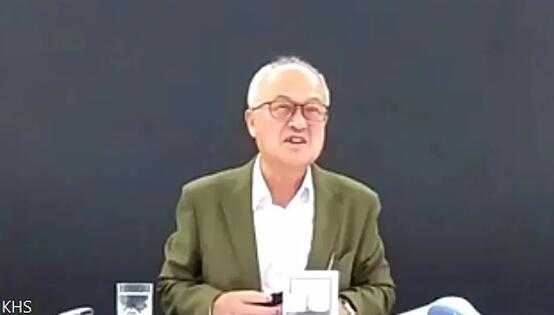
Mr. Jas Bedi, Head of Bedi Investment in Sahara Africa, introduced the situation of the textile industry in the African region to the participants. Countries such as Tanzania have some problems in the upstream textile and spinning industry, logistics are somewhat disrupted, and on-time delivery and supply chain transfer are showing some problems. Countries such as Uganda and Kenya have demand for machinery but cannot deliver. In Africa, there are many projects in apparel and machinery manufacturing. We have been discussing these issues a lot recently at summits in Africa. Seventy percent of cotton in Africa is produced by small cotton farmers, and if the problems in the textile industry are not solved it will affect their daily lives. Many projects are now investing in Kenya because of competitive costs and preferential import tariffs. 20% growth in Kenya's exports in 2020-2021 may not be an order of magnitude compared to other Asian countries' figures, but for us the figures are very significant. Currently, 70,000 people are working in factories in Africa, and there are challenges for Africa in terms of production speed and logistics. With China as one of our partners in Africa, we hope to work more with China to export relevant products to America and Europe. In addition, continental-level free trade agreements have been signed between several African countries. South Africa, East Africa, and Egypt form a huge free trade area. Africa not only represents the market of Europe and America, but also the whole Africa is a big market.

During the meeting, Anees Khawaja, CEO of Pakistan Mohammad Group, said that Pakistan has some problems in politics, economy and industry. There is a constant change of government and recent textile projects have been postponed for various reasons. Accordingly, there are some policy changes in the garment industry and the textile industry. Currently, 60-70% of the country's revenue comes from textile exports, with home textiles being the most popular sector. He hopes that Pakistan's textile industry can strengthen its competitiveness and related textile projects can go to restore the impact. He stressed that Pakistan is currently suffering from a severe economic recession. For the future, Pakistan's textile industry will focus on sustainable development, and he believes that Pakistan will turn the tide against the wind in the near future and is expected to see a 25% growth this year. In addition, he also expressed hope that the local balance sheet has improved, and increased investment opportunities.
Mr. Salman Ispahani, a representative of Pahatli Textiles in Bangladesh, said that last year, Bangladesh's garment exports grew by 25-30% year-on-year. Because the price of cotton keeps rising, Bangladesh has been affected by the rising price of raw materials, and the price of yarn has been adjusted recently. Although the purchase volume of retailers has dropped and the year-on-year growth has slowed down, the orders are not much affected at present. In the textile machinery sector in the past two years increased investment of $ 25 billion, the establishment of new textile factories, by the shortage of parts and more orders, there are some machinery and equipment delivery period may be extended to two and a half years. He expects further growth in the textile industry in Bangladesh in the future.
Dr. K.V. Srinvasan, representative of Indian textile company Premi Group, said in the communication that in 2021, Indian textile industry has performed outstandingly and improved its global ranking, and garment and home textile products have achieved good growth of Indian exports. But at the same time also faced some challenges, cotton textile supply chain in the past period of time generated volatility for the Indian textile industry has brought a certain degree of impact. At the same time, logistics problems, high crude oil prices, as well as changes in the international situation has also had an impact on the Indian industry. In addition, the domestic market and international market demand decline, especially since May-June, orders have decreased, in clothing, home textiles, as well as yarn, fabric orders are reflected. He also said that at present, India's production costs are still competitive compared to other countries, especially in the field of spinning, weaving and even knitting. Looking ahead, with the current growth of India's investment in spinning, apparel, home textiles and other areas, as well as the government's policy support in expanding production capacity, will better promote the continued growth of India's textile industry.

Mr. Sung Ji Hak, head of Korea Young Won Group, introduced the situation related to the markets of Korea, Vietnam and Bangladesh.
Korea is currently facing many problems such as trade deficit, rising energy costs, and the appreciation of the US dollar, etc. In the textile industry, there is a trade deficit of USD 6 billion, which means that the textile trade is mainly imported rather than exported. Korea is now importing from China, Vietnam, Italy and other countries. The new government of Korea has been emphasizing the return of manufacturing industry at the moment, but it is still to be seen, and if it does not materialize, the trade deficit will continue to increase.
In terms of the Vietnamese market, factories were forced to shut down in 2020 because of the epidemic, and according to statistics, $4 billion in sales were lost between 2019 and 2020. In recent years, Vietnam has recovered in terms of business, with an estimated $43 billion in sales. At the same time, Vietnam is trying to promote the improvement of the supply chain to make the textile industry grow better. In addition, the government opposes any hidden problems in environmental protection and pursues sustainable development with a serious attitude.
Currently, Bangladesh is performing well, achieving $42.5 billion in exports, and the Bangladesh Exporters Association expects apparel exports to be expected at $100 billion in 2030. However, three-quarters of Bangladesh's products are currently cotton products, and hopefully they can make more efforts to reverse this in the man-made fiber supply chain.
Overall, if the market situation can remain stable, Bangladesh and Vietnam should perform well and be good opportunities for textile machinery manufacturers, especially their demand for environmentally friendly spinning machine products will increase.
Mr. Mustafa Denizer, head of Turkey Diktas Textile, introduced Turkey's textile industry in the past two years, export performance is very good, especially the export of textile machinery outstanding performance. Leather products exports have improved, carpet exports have decreased. According to the introduction, Turkey's investment in textile machinery reached 4.4 billion U.S. dollars, showing the highest level since 2000, the number of people employed in the textile industry increased significantly. He said that Turkey is also currently facing relatively large pressure, the current U.S. and European textile purchasing power is significantly reduced, there will be a situation of order cancellation. Turkey is currently under pressure in terms of currency and inflation, and the overall economic performance is not ideal. The future hopes to achieve more growth in textiles, Turkey's textile industry has a certain demand for affordable, high technology textile machinery.

Kassem, a representative of Egyptian textile enterprises, said that he felt very encouraged by the opening remarks of Chairman Sun Rizhe, who talked about the social impact of the textile industry, which is very important. We need to work hard to work together to bring the textile industry to Africa and Egypt. Although African textiles are not bad, at the moment, the whole textile industry in Africa is not as big as we want it to be.
For Africa, our problems are actually similar to everyone else, also experiencing economic recession, so we hope that the current economic stagflation will not last too long, it is a very difficult situation, it is difficult to balance. For textiles, the first four months of this year, our garment exports grew 45%, of course, some may be affected by inflationary factors, but, most of them are still the result of increased volume. At the same time, the government has also taken some measures in the upstream of the industry, and these drives have produced some results. Our textile machinery federation also helped Egypt to get a historic 520 million euros of large orders.

Mr. Fernando Pimentel, representative of the Brazilian Textile and Apparel Association, presented the current economic situation in Brazil. By comparing the data of the textile and apparel industry in terms of production, sales, import and export, and employment so far in 2019, the current development of the textile and apparel industry in Brazil was analyzed. Brazil's textile and apparel value chain shows positive growth from 2021. Investments in machinery and equipment have grown by about $2 billion this year. Currently, the Brazilian textile and apparel industry is paying more attention to the domestic market, with production remaining stable overall and sales growing, and the future to reduce the consumption of raw materials and the use of new raw materials. In terms of exports, focusing on southern Latin America and the United States; in terms of imports, the main focus on countries from Asia, especially China. He expected that this year, Brazil's textile and apparel imports of about 5 billion U.S. dollars, exports of about 1-1.5 billion U.S. dollars. Talking about the coming year, he said that the market in Brazil is full of uncertainties due to factors such as the increase of inflation in the United States, the increase of the interest rate of the U.S. dollar and the presidential election in Brazil.
The meeting, representatives of textile machinery enterprises from a number of countries also around their own equipment in the field of market feelings to share information.
Mr.Sanjay Jayavarthanavelu, the representative of spinning machinery company India Longview, said in the exchange that the market demand for spinning equipment has always been very strong since 2021, and in his opinion, it will remain so in the next few years. However, the industry also faces a number of challenges, including inflation, rising raw material prices, supply chain problems, shortages of electronic products, logistics problems and so on, and not all problems have solutions. He said the company has not yet had any order cancellations, and the momentum is stronger. From the customer situation, the performance is also relatively stable, and customer companies are further promoting equipment renewal. Longview is now and will continue to focus on sustainability, digitalization and automation in the future.
Mr. Georg Stausberg, representative of Oerlikon, a chemical fiber machinery company, introduced that Oerlikon's main business is in chemical fiber machinery. At present, orders are good in textile machinery, and in spinning yarn, due to the situation in Ukraine and rising oil prices, customers' profits are affected and inventories are relatively high. Although there is no order cancellation yet, but there will be order delay phenomenon. Customers are becoming more cautious in their investments, especially in spinning machinery. On the woven side, woven capacity has increased over the past few years, and capacity is also increasing on the spinning machinery side. All of the company's customers are integrated customers. The overall situation is good, with some big players expanding their business with a view to extending the value chain, while some smaller players are being established in Central America and Turkey. Currently, the market is improving compared to previous years, but it is still difficult to maintain high growth rates. From last year more heard about sustainability, energy saving, automation, but users also differ in their choice of equipment, some companies still choose manual equipment, because the automation equipment for the quality of the relevant personnel also requires higher.
Mr. Kurt Lamkowski, the head of the woven machinery company representative BJL, said that in 2021, we have a very strong market rebound, as do other machinery categories. Mainly several factors, first of all, the new crown epidemic to some extent to get some control, the industry investment has improved; at the same time, we also note that some medium-sized enterprises, but also after the epidemic to get further development, these factors are directly led to the woven enterprises in the past few years time investment growth. In the past year, from the perspective of woven machinery, we also had supply chain issues, such as shortages, where our production capacity could not meet the rapid increase in market demand, which also led to longer delivery times.

Most manufacturers are now performing well in terms of orders, and there is a backlog of orders. If we make a forecast for 2022, I think it should be very strong from a volume point of view, similar to 2021. Of course, in general, it depends on the orders, and the accumulation of orders this year.
Regina, the printing and dyeing machinery representative, said that in dyeing and finishing, it is important for manufacturers to focus on customer needs, that is, to focus on reducing CO2 emissions, reducing water and energy consumption, improving automation and so on.
In the past year, our growth has been good overall and, in the first few months of the year, positive growth was also achieved. Of course, there is still a lot of uncertainty, and we are seeing some slowing trends. For example, there is a lot of uncertainty in Europe regarding natural gas and other sources of energy.
The current market trend is that our customers want to get rid of the old machinery, they need more high-tech, automated and more environmentally friendly machinery. However, the financing aspect was also mentioned earlier, which is more difficult for our customers.
China Textile Machinery Association Secretary General Cong Zheng around the overall situation of China's textile machinery industry since 2021 and the main spinning machine product sales to communicate. 2021 China's textile machinery industry to achieve operating income of more than 90 billion yuan. 2022 in the first quarter to continue the growth trend, from April the industry into negative growth.
According to the report, in 2021 China's textile machinery exports 4.8 billion U.S. dollars, imports 3.6 billion U.S. dollars. From January to May 2022, China's textile machinery exports were US$2.0 billion, up 4.8% year-on-year; imports were US$1.5 billion, down 9.1% year-on-year. Since 2021 China's main import countries of textile machinery are Japan (33%), Germany (31%), Italy (9%); the main export countries are India (19%), Vietnam (10%), Turkey (7%).
Talking about the sales of major textile machinery products, he said that in 2021, spinning machinery to return to the pre-epidemic level, chemical fiber machinery to record high; 2022 quarter of the main machinery year-on-year are to achieve greater growth. Weaving machinery and knitting machinery in 2021 have hit a new high in recent years. 2022 quarter of the main machinery year-on-year stability, rapier loom and water jet loom appeared a large drop.
Cong Zheng said, currently facing the risk of global inflation and China's domestic consumer market recovery rate of two uncertain factors, the spinning machine industry is continuing to recover, still need more confidence and patience. The future spinning machine industry to firmly to automation, intelligent, green energy-saving direction.
At the meeting, Maurer Ernesto, chairman of the European Textile Machinery Association, shared the situation of the two recent spinning machine exhibitions held in Turkey and Germany. He said that the "ITM ISTANBUL 2022" exhibition held in Istanbul, Turkey is not too many exhibitors and visitors, but the quality is higher, which is exactly what we want, because the purpose of the exhibition is to conduct high-quality exchanges and discussions. In fact, many spinning companies participated in the exhibition and received good orders, although the delivery time was extended due to supply chain and raw material problems. What was surprising was that people from all over the world are aware of the problems we are facing now, but everyone is trying to respond positively. The show in Frankfurt, Germany, was impressive, with more exhibitors and visitors than expected. He said the epidemic has made us more aware of what the purpose of holding a show or visiting a show is to maximize value so that the show is meaningful.
Christine Schindler, Director General of ITMSS, gave a brief analysis of the 2021 ITMSS Textile Machinery Shipment Statistics Report (ITMSS 2021) at the conference. He took the chemical staple fiber equipment situation as an example for the global market trend analysis. According to the report, shipments of staple fiber spindles in 2021 grew 110% year-on-year, showing a cyclical performance, of which China accounted for 51% and 90% overall into Asia. Among the top 10 investing countries globally, China is in first place, followed by India, Pakistan, Turkey, Uzbekistan, Bangladesh, Vietnam, Malaysia, Mexico and Egypt. Other sub-sectors will vary in terms of shipments, but the overall trend is similar to an increase in shipments in 2021.
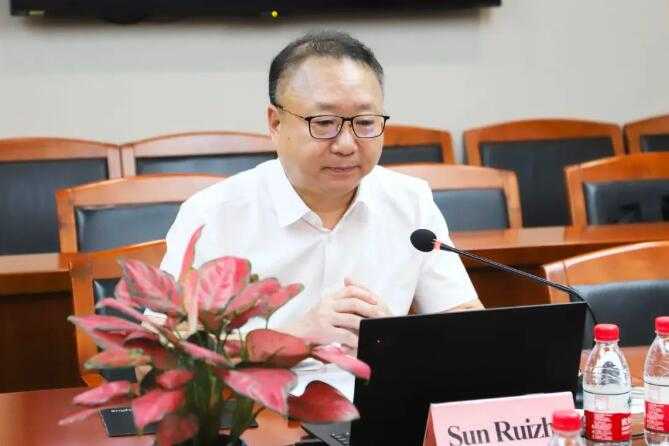
He also shared the research conducted by the International Textile Federation in the last week. From the research pooled by different sub-sectors, the order situation is generally good, with a decline in the first half of 2022 compared to the same period last year. The second half of the year orders are also expected to be lower compared to the same period last year. In view of the situation in 2021 and the impact the industry is facing including supply chain issues, the situation in Ukraine and energy prices, orders are down in most regions and up in a few. Talking about spinning machine trends, he said that with the increase in water consumption, labor and other costs, industry investment will focus more on sustainable production, so the demand for higher flexibility and small batch production equipment will be reflected.
In his concluding remarks, Sun Ruizhe, president of the International Textile Federation and president of the China Textile Federation, said that we are now dealing with a variety of unprecedented issues and challenges. ITMF has members all over the world, and we hope that every colleague attending the conference will feel that they have the support of the ITMF and everyone else.
Previous: AATCC 201 Fabric Drying Rate Tester
N e x t : Here's what you need to know about the Dry Resistance Microbial Penetrometer



